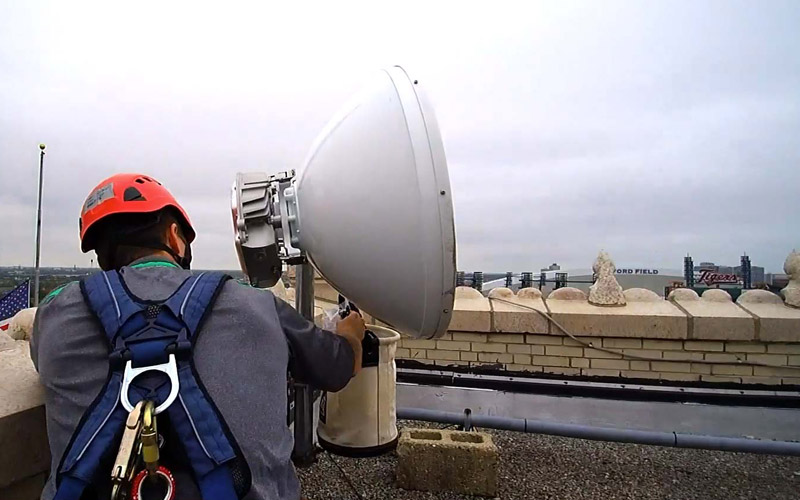
Introduction
Wavelength Division Multiplexing (WDM) stands at the forefront of revolutionizing modern telecommunications. It is serving as a pivotal technology that maximizes the capabilities of optical fiber networks. By enabling multiple data streams to travel simultaneously across a single optical fiber, WDM significantly enhances bandwidth and network efficiency. This introduction of multiplexing wavelengths has not only elevated the performance standards of telecommunications networks but also underscored the vital role of optical networking. It is supporting the ever-growing demand for data transmission. As we delve deeper into WDM, we unravel its significance, from fiber optic technology’s fundamental principles to its application in global telecommunications. It is offering a comprehensive understanding of its operation and impact.
Understanding Wavelength Division Multiplexing (WDM)
Wavelength Division Multiplexing (WDM) is a technique that combines multiple optical carrier signals onto a single optical fiber by using different wavelengths (i.e., colors) of laser light. This method enables the fiber to carry more data than would be possible with a single light wavelength. The basic principle of WDM revolves around optical networking. Where each data stream is associated with a specific wavelength of light. These data streams are then combined and transmitted simultaneously over the same optical fiber, significantly increasing the fiber’s bandwidth.
The historical evolution of WDM traces back to the early days of optical communications, where the need to efficiently utilize the vast bandwidth potential of fiber optic technology catalyzed its development. Over the years, WDM has evolved from simple systems with a few wavelengths to sophisticated networks utilizing Dense Wavelength-Division Multiplexing (DWDM). It is a testament to its critical role in advancing telecommunications.
Dense Wavelength-Division Multiplexing (DWDM) Explained
Bandwidth Potential
Dense Wavelength-Division Multiplexing (DWDM) stands as a pivotal advancement in the realm of wavelength multiplexing technologies. Distinguishing itself by its capacity to handle an extensive array of data streams through a singular optical fiber. By utilizing closely packed wavelengths, each assigned to carry a distinct data stream, DWDM significantly elevates the bandwidth potential of optical networking systems. This ability to efficiently multiplex multiple wavelengths onto the same fiber without interference is what sets DWDM apart. It is offering a solution that combines high data transmission rates with the reliability and efficiency of fiber optic technology.
Optical Fiber Cables and Amplifiers
The core technology enabling DWDM’s functionality revolves around its sophisticated use of optical fiber cables and amplifiers. These cables are the fundamental infrastructure supporting the transmission of light signals over considerable distances. Coupled with optical amplifiers, which reinforce these signals to prevent degradation over long hauls, the system ensures that data integrity is maintained from point to point. This synergy between precision-engineered cables and amplifiers underpins the success of DWDM. It is meeting the voracious appetite for bandwidth in contemporary telecommunications networks.
Moreover, DWDM’s technology is defined by its rigorous wavelength management, a technical feat that requires precise calibration to ensure each wavelength is correctly modulated and demodulated at either end of the transmission. This meticulous attention to detail enables the simultaneous transmission of hundreds of data streams, making it an indispensable technology in the backbone of modern optical networking.
Key Components of DWDM Systems
At the heart of Dense Wavelength-Division Multiplexing (DWDM) technology lies the optical fiber cable. It is a crucial element that facilitates high-speed data transmission across vast distances. Engineered to minimize signal loss and distortion, these cables are the lifelines of DWDM systems. It is enabling optical signals to maintain their integrity over long hauls. The design and material composition of these cables are optimized to ensure that data can be transmitted efficiently. It is making them indispensable to the infrastructure of modern telecommunications.
Transmitters and receivers are pivotal to the DWDM architecture, serving as the gatekeepers of data integrity. They are tasked with the conversion of electrical signals into optical signals and vice versa. Each data stream is assigned a unique wavelength, allowing multiple signals to coexist on the same fiber without interference. This multiplexing and demultiplexing process is critical for preserving the distinct paths of data streams. It is ensuring that each signal reaches its intended destination without cross-talk or loss of quality.
Another cornerstone of the DWDM system is the optical amplifier, designed to fortify the signal strength over extended distances. These amplifiers play a vital role in counteracting the natural attenuation of light as it travels through the fiber. It is enabling signals to traverse continental and transoceanic lengths without degradation. By amplifying the light directly without the need for conversion back to electrical signals, these components maintain the purity and speed of the data transmission. it is ensuring the network’s capacity to handle vast amounts of data with unwavering reliability.
DWDM vs. CWDM: A Comparative Analysis
Dense Wavelength-Division Multiplexing (DWDM) and Coarse Wavelength-Division Multiplexing (CWDM) are two pivotal technologies employ to augment the bandwidth capabilities of optical fiber networks. Each are characterize by its unique approach to channel spacing. DWDM distinguishes itself by its ability to pack channels closely together. It is enabling a significantly higher number of data-carrying wavelengths to be through a single fiber. This close spacing is instrumental in DWDM’s capacity to support a vast amount of data transmission. It is making it an ideal choice for applications demanding high bandwidth and data throughput.
Conversely, CWDM adopts a strategy of wider channel spacing, which naturally limits the number of wavelengths that can be transmit simultaneously. Despite this constraint, the broader spacing contributes to reduced complexity and lower costs in system implementation and maintenance. CWDM systems, therefore, offer a cost-effective solution for enhancing network bandwidth, particularly to suite to shorter-distance applications where the ultimate bandwidth capacity of DWDM is not required.
This fundamental difference in channel spacing between DWDM and CWDM encapsulates the trade-off between performance and cost. DWDM’s tighter spacing necessitates more sophisticated and expensive equipment to precisely generate and separate the closely packed wavelengths. CWDM’s approach, while less capable in terms of data throughput, provides an economical alternative for expanding network capacity without the high investment associated with DWDM infrastructure. Consequently, the choice between DWDM and CWDM technologies often hinges on the specific requirements of the network, including the desired data capacity, distance coverage, and budgetary considerations.
Benefits of Using DWDM in Telecommunications
The utilization of DWDM in telecommunications brings forth significant benefits, notably in bandwidth optimization and network efficiency. By allowing multiple data streams to coexist on a single fiber, DWDM maximizes the use of the existing infrastructure. It is reducing the need for additional cables and equipment. This efficiency translates into enhanced capacity to handle growing data demands, ensuring network scalability.
Moreover, DWDM offers cost-effectiveness and scalability. Its ability to increase network capacity without substantial physical expansion helps in reducing operational and capital expenditures. It is making it a viable solution for expanding telecommunications networks.
Challenges and Limitations of DWDM
Despite its advantages, DWDM faces technical challenges and potential limitations. The complexity of managing DWDM systems, particularly in aligning and tuning the wavelengths, requires specialized equipment and expertise. Additionally, the initial costs can be significant, given the need for specialized optical amplifiers and filters.
Furthermore, as the demand for bandwidth continues to grow, DWDM systems must evolve to accommodate even higher data rates and channel counts. This continuous need for innovation presents both a challenge and an opportunity for advancements in DWDM technology.
Future Trends and Developments in DWDM
Innovations in DWDM technology are poising to further enhance its capabilities and application in global telecommunications. Advances in optical networking, such as the development of more efficient optical amplifiers and the integration of artificial intelligence for network management, promise to address current limitations and open new possibilities for DWDM systems.
The future outlook of DWDM is optimistic, with ongoing research and development focusing on increasing bandwidth capacities. As well as improving signal quality, and reducing costs. As telecommunications networks continue to evolve, DWDM will undoubtedly play a critical role in shaping the future of optical networking.

FAQs
- What is the principle of DWDM? A: DWDM works on the principle of combining multiple data streams, each on a unique wavelength of light, and transmitting them simultaneously over a single optical fiber, thereby maximizing bandwidth.
- How does DWDM differ from traditional multiplexing techniques? A: DWDM differs in its use of closely spaced optical wavelengths to carry different data streams, allowing for a significant increase in data transmission capacity compared to traditional techniques.
- Can DWDM be used for long-distance communication? A: Yes, DWDM is especially suited for long-distance communication, thanks to optical amplifiers that boost signal strength, enabling data transmission over hundreds, even thousands, of kilometers without significant loss of quality.




